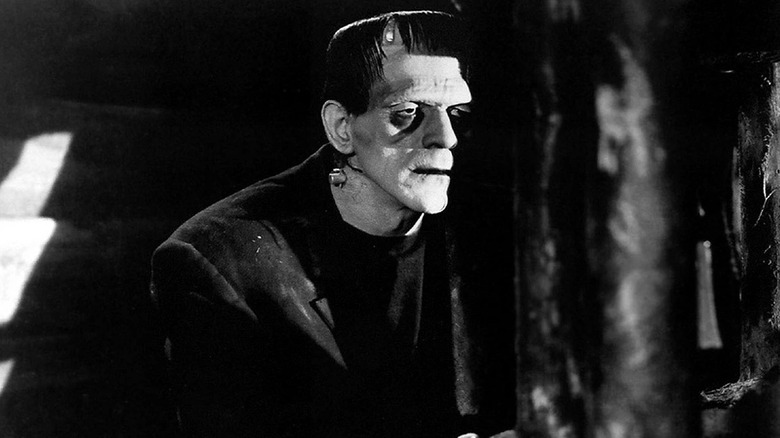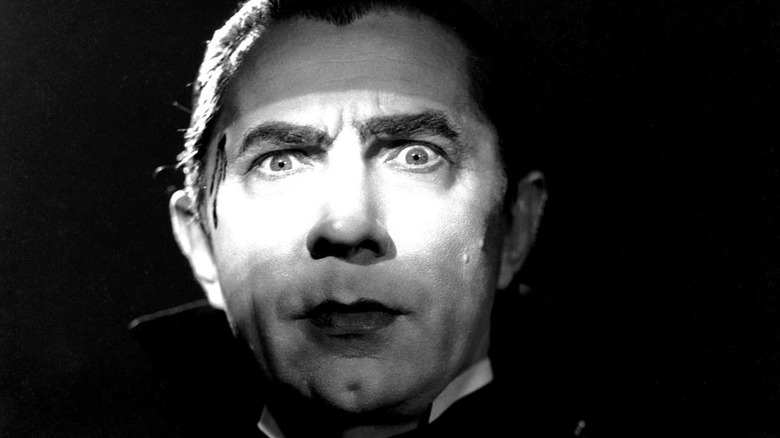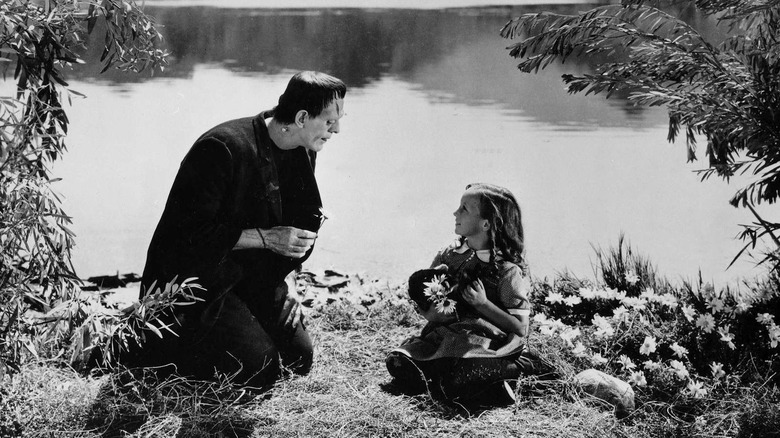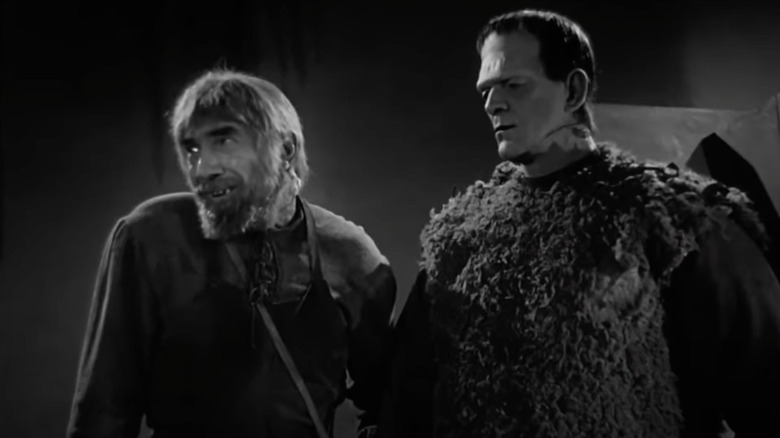The Behind-The-Scenes Battles That Landed Boris Karloff In Bela Lugosi's Frankenstein Role
When people picture Count Dracula and Frankenstein's Monster, they think of the classic versions played by Bela Lugosi and Boris Karloff. Lugosi's suave, mysterious, and authentically European Dracula has informed all subsequent portrayals while Karloff's lumbering, green-skinned monster has eclipsed Mary Shelley's original description of the Creature in her novel.
The actors (and their respective characters) headlined many of Universal Pictures' classic horror monster movies. It all began in 1931, when Todd Browning's "Dracula" debuted in February and James Whale's "Frankenstein" followed in November. In another world, that year's fruits could've been all Lugosi's: Universal producer Carl Laemmle Jr. wanted to capitalize on the success of "Dracula" and have Lugosi play Frankenstein's Monster too. He thought Lugosi could be the "new Lon Chaney" — the "man of a thousand faces" — but the actor was reluctant to take up the offer.
"The Immortal Count: The Life and Films of Bela Lugosi" by Arthur Lennig details this behind-the-scenes drama and how Lugosi's loss was Karloff's gain.
An indignant star
As Lennig recounts, the original director of "Frankenstein" was French filmmaker Robert Florey. In Florey's interpretation, Frankenstein's creation was a simple-minded monster, not the tragic and intelligent character of the novel. This turned off Lugosi, who thought the part of the monster was beneath him. Lennig writes:
"Like a true man of the theater, [Lugosi] resented that he would have no "sides" (dialogue) and would be stuck portraying a mute and heavily disguised creature capable only of grunts and growls. Anybody could do this, he stated with indignation. Aloof and perhaps somewhat intemperate, the former Hungarian matinee idol saw himself as a sexy man who had played the part of a vampire, not as a "horror" man hiding his good looks under grotesque makeup. Excited at last to be a big Hollywood star whose image adorned all Dracula's posters, his sudden fame perhaps went to his head."
The part Lugosi was interested in was Dr. Frankenstein. The doctor was more complex than his creation, the story's true lead (with actual dialogue), and to play him, Lugosi wouldn't have to conceal his good looks. Unless you're Madeline Kahn, Frankenstein's Monster isn't anyone's idea of a sex symbol.
Nonetheless, Lugosi agreed to a screen test; no images of him made up exist, so it's unclear how close Lugosi's monster resembled Karloff's. A poster for "Frankenstein" was made with Lugosi's name plastered on it, but of course, the film that arrived in theaters didn't feature him.
James Whale enters the picture
Florey was replaced by James Whale, who was announced as the film's director on June 30, 1931 by the Los Angeles Examiner. Whale recruited Colin Clive (the star of his previous film "Journey's End") as Dr. Frankenstein, over Universal's choice of Leslie Howard. By some accounts, Lugosi had even accepted the part, which seems likely given the make-up-heavy screen test. However, the Hollywood Filmography announced on July 18 that Lugosi had been let go from the picture due to his objections to the part.
Lennig speculates that Whale didn't like Lugosi's "opinionated" temperament and would have preferred to work with a fellow English gentleman like Boris Karloff (the actor's birth name was the far more Anglo moniker, William Henry Pratt). "Frankenstein" went on to success while Florey and Lugosi were given "Murders in the Rue Morgue," released in 1932.
This wasn't the end of Lugosi's tango with Frankenstein though. He appeared in "Son of Frankenstein" and "Ghost of Frankenstein" as the deformed Ygor; it may not have been a sexy part, but it was a more compelling one than a growling monster. Lugosi would ultimately play the creature itself in "Frankenstein Meets The Wolfman," but Karloff had already defined the part by then and Lugosi was destined to be an imitator.
Legacy of Frankenstein
Thanks to "Frankenstein," Karloff's star power rivalled — and then later, eclipsed — Lugosi's. After playing Imhotep in 1932's "The Mummy," Karloff returned to the part that made him famous for "Bride of Frankenstein" and "Son of Frankenstein." When Karloff and Lugosi starred together in "The Raven," the former got top billing and a bigger spot on the poster.
Karloff put a cap on his career with Peter Bogdanovich's 1968 "Targets." Karloff played a fictionalized version of himself: retiring B-movie horror actor Byron Orlok. After a career of larger-than-life characters, Karloff finally got to show audiences his true self with one of his final roles. Lugosi, on the other hand, saw a career decline; his last credit is on Ed Wood's "Plan 9 From Outer Space," which is sometimes held up as the worst movie ever made.
Tim Burton's "Ed Wood" (where Lugosi is played by Martin Landau) references this history. Lugosi spits Karloff's name with venom and bitterly regrets turning down "Frankenstein": "part wasn't sexy enough... too degrading for a big star like me." "Ed Wood" is highly fictionalized, but reporting indicates that Lugosi's regrets about "Frankenstein" were real. Comparing his career path to Karloff's, it's easy to see why.



